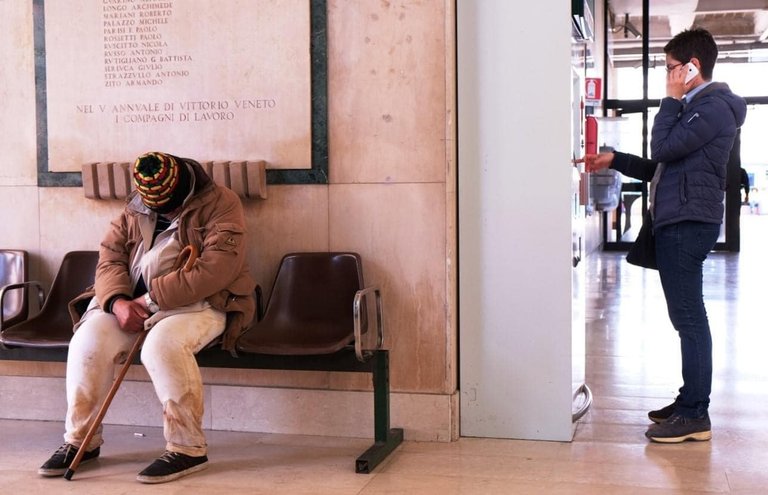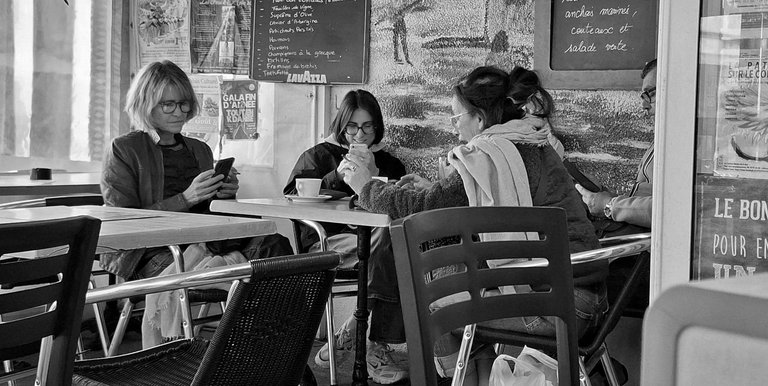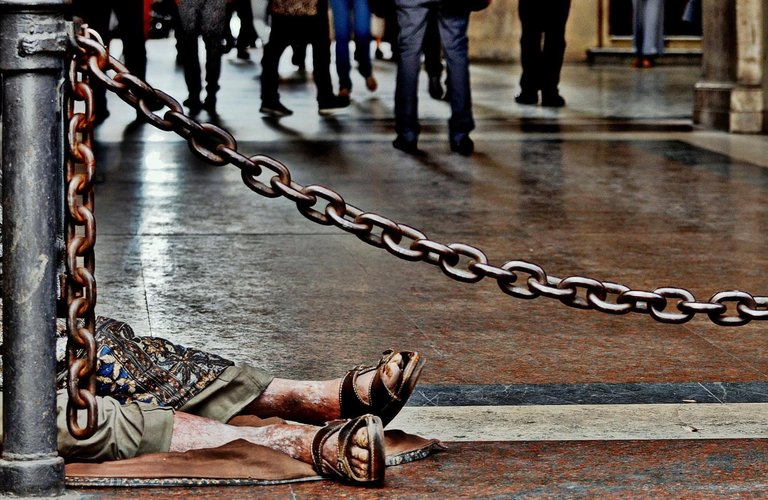
A moment of silent solitude in a public place. The elderly person, sitting with his head bowed and leaning on his stick, is a symbol of a life that seems to have stopped, marked by time and tiredness. His dirty clothes, neglected and ignored by the rest of the world, accentuate the sense of abandonment.
A short distance away, the figure speaking on the pay phone represents the strongest contrast: life that continues, frenetic and unaware. The physical closeness of the two people, and at the same time their emotional disconnection, symbolizes the social detachment and indifference that often surrounds us. While one person continues to communicate, to live, the other seems invisible, forgotten by the daily flow.
Lack of empathy can characterize our modern lives. This shot manages to capture, in a single frame, the weight of indifference and the loneliness that often hides behind the dull eyes of those left on the margins

The photo depicts four friends sitting at a table in a bar, but their gazes do not meet: each is distracted by something different. Some stare at their cell phones, others seem lost, isolated in their personal bubble.
Black and white amplifies the sense of detachment, of coldness, almost as if wanting to freeze a moment that has no life, despite the human presence. The absence of colors conveys the absence of emotion, of connection, and makes that sense of a dull gaze more tangible. The bar, a symbol of sociality and sharing, instead becomes the scene of a profound collective solitude. There is no dialogue, there is no interaction, and the emotional distance is made even more evident by the contrast with the physical closeness of the subjects.
The indifference that arises from habit, technology and disinterest in others.

The composition of the image reinforces the sense of depersonalization and invisibility to which those who live on the margins of society are subject. The people walking around, completely distant, seem not to notice the presence of man, accentuating the sense of isolation and disconnection between the world of those who live on the street and that of those who pass by.
The contrast between the immobility of the homeless man and the constant flow of city life is evident. This visual contrast creates a powerful metaphor of indifference, of the gaze that goes out, in which suffering or the condition of need are ignored by a society that continues its race without stopping.
